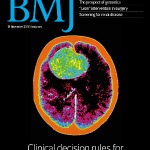My opinions about using an electronic medical record (EMR) system for recording trauma activations are well known. I received this well thought out response that I wanted to share and comment on:
My quote: “I defy any of them to come to a trauma resuscitation and rapidly and accurately transcribe all of the information presented, or try to review a PI case based on a printed EMR report.”
Their response: I’m a nurse informaticist, I’ve been a trauma nurse for 15 years, and I review PI cases using the electronic record. I work in an inner city Level 1 trauma center that’s associated with a large academic institution. We have recently implemented an ED Information System in our department and I have documented major traumas electronically. My trauma charts beat my colleagues written flowsheet in accuracy, comprehensiveness, and detail, hands down.
Your blog entry on this topic seems very close-minded. The “flowsheet” is not the silver bullet for trauma documentation. I agree that an EMR can be lengthy but it, by far, surpasses the flowsheet in thoroughness in detail. They both have their pros and cons, why be so quick to pick one? Yes, flowsheet data might be convenient for the reviewer but have you considered the effect on workflow for the frontline staff? An ED that has a comprehensive information system (CPOE, electronic tracking, physician and nurse documentation) must pull out a piece of paper and write on it so that a reviewer can find things easier retrospectively? It seems to me the priority should be the appropriate care for the patient and positive outcomes versus a reviewer being inconvenienced by having to read a long chart.
My response: My main problem with using an EMR to record a trauma activation is that the current human interface technology (keyboard, mouse) do not allow for rapid data entry and movement between different screens of input boxes. If a scribe such as yourself becomes extremely familiar with the system, it is certainly possible to overcome these difficulties with sheer skill and familiarity. However, your response implies that you are the only one capable of doing this. Your colleagues must still use the written trauma flow sheet.
The purpose of the flow sheet is to allow any scribe to record meaningful data that can be used to document patient care and to review and rebuild a complex resuscitation for performance improvement purposes. It is not designed to please trauma center reviewers. But the process the reviewers use to reconstruct a trauma activation is the same one that the hospital’s trauma program must use to dig into the events that occur in a trauma activation. If the input data is faulty because the scribe could not keep up in the EMR or had to enter it later, or if the output is dozens of pages of data that is difficult to sift through, the trauma program manager must spend an inordinate amount of time trying to figure out exactly what happened. The “thoroughness and detail” you mention in the EMR can be a hindrance if the quantity of data eclipses its quality. I have reviewed EMR records with 30 pages in the trauma flow sheet report!
The reviewers look for some kind of trauma flow data that they can use to rapidly rebuild what happened in the trauma room. If the reviewers can’t do it, then the trauma program probably can’t do it either. Neither I nor any of the other reviewers I have worked with have found an EMR trauma flow sheet that matches the utility of paper. Yet. The day will come, but it’s not here yet.
I welcome any additional opinions on this debate. Please leave a comment!
Related posts:



